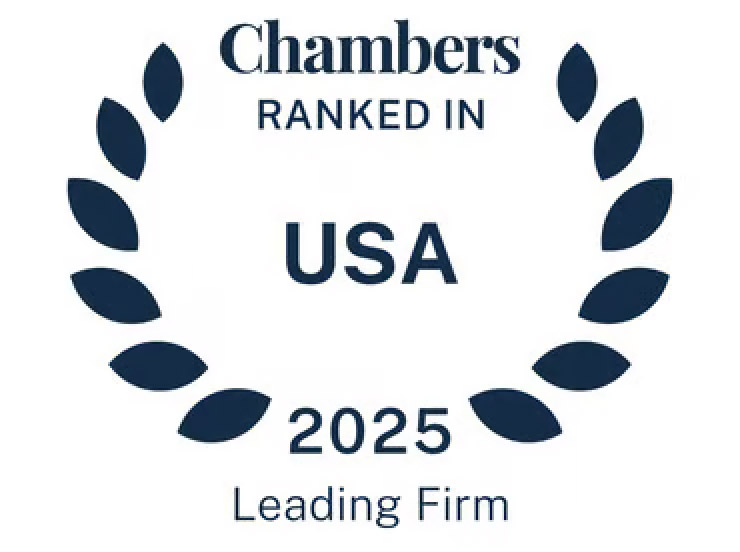MARY POWELL and ERIC SCHILLINGER, August 2015 —
On August 7, 2015, the IRS issued new draft forms and instructions to be used by certain health-coverage providers and employers who are required by the Patient Protection and Affordable Care Act (the “ACA”) to report health coverage offered and provided in the prior calendar year on an annual basis beginning 2016 for coverage offered in 2015. These ACA-reporting requirements are contained in Internal Revenue Code (“Code”) Section 6055 which applies to providers of “minimum essential coverage” (such as health insurance issuers and sponsors of self-insured group health plans, like multiemployer trusts), and Section 6056 which applies to employers with 50 or more full-time employees, taking into account part-time employees (“applicable large employers” or “ALEs”). Some of the significant changes to the prior versions of the draft forms and instructions (described in more detail below) include:
- Guidance on how ALEs should report offers of COBRA continuation coverage under Code Section 6056;
- An explanation of the newly-increased penalties for ALEs and providers of minimum essential coverage who fail to satisfy their reporting requirements; and
- New guidance for reporting under Code Section 6056 for ALEs who contribute to multiemployer health plans.
See our May 2015 article for a description of the prior versions of the above reporting forms and instructions, which were issued for optional reporting in 2015 (required in 2016) of coverage offered or provided in 2014.
Forms 1094-B/1095-B —
Reporting by Providers of Minimum Essential Coverage
Among the newly-issued documents are the draft Form 1095-B (“Health Coverage”) and instructions to the Forms 1094-B/1095-B. (The 2015 draft Form 1094-B, a transmittal form for the individual Form 1095-B, was issued in June 2015.) Forms 1094-B and 1095-B are used by providers of minimum essential coverage who are required to report under Section 6055 of the Code on health coverage provided in the prior calendar year, and furnish related statements to covered individuals. The information reported on the Forms 1094-B and 1095-B allows the IRS to determine whether an individual owes a tax penalty for failing to obtain certain health coverage required by the ACA’s Individual Shared Responsibility Rules (also referred to as the “Individual Mandate”). The draft Form 1094-B/1095-B instructions include several substantive changes, such as:
- No Reporting Required for Certain Supplemental Coverage. Final IRS regulations provide that Code Section 6055 reporting is not required for minimum essential coverage that supplements other minimum essential coverage if: (1) both coverages have the same plan sponsor, (2) the supplemental coverage supplements government-sponsored coverage (e.g. Medicare) or (3) for individuals who do not enroll in the supplemental coverage. The draft instructions clarify that coverages do not have the same plan sponsor for purposes of this exception (i.e., separate reporting is required) if those coverages are not reported by the same entity. For example, an employer who maintains an insured group health plan and a self-insured health reimbursement arrangement (“HRA”) covering the same employees would trigger two separate Forms 1094-B/1095-B. The insurer would separately report the coverage it provides, while the employer would be required to report the coverage provided through the HRA.
- Reporting Coverage of Non-Full-Time Employees. The draft instructions provide that ALEs who sponsor self-insured health plans (and therefore are required to report under both Code Sections 6055 and 6056) may report coverage of individuals who are not full-time employees during any month of the year using either the Form 1095-B or Part III of the Form 1095-C. The prior version of the instructions required those ALEs to report non-full-time employees on Part III of Form 1095-C. However, we note that the draft instructions for Forms 1094-C/1095-C, perhaps unintentionally, have not been updated to include the same flexibility.
Forms 1094-C/1095-C — Reporting by ALEs
The newly-issued documents also include the draft Form 1095-C (“Employer-Provided Health Insurance Offer and Coverage”) and instructions to the Forms 1094-C/1095-C. (The 2015 draft Form 1094-C, a transmittal form for the individual Forms 1095-C, was issued in June 2015.) Forms 1094-C and 1095-C are used by ALEs who are required under Section 6056 of the Code to report on the coverage offered to full-time employees in the prior calendar year. ALEs who sponsor self-insured health plans (considered providers of minimum essential coverage) will also use the Form 1095-C (Part III) to report the information required by Code Section 6055, rather than using the Form 1095-B. The information reported by an ALE allows the IRS to determine: (1) whether the ALE offered certain health coverage to its full time employees and the extent to which the ALE may be subject to any tax penalties under the ACA’s Employer Shared Responsibility Rules contained in Code Section 4980H (also referred to as the “Employer Mandate” of the “Pay-or-Play Rules”); and (2) whether any of the ALE’s employees are eligible for a premium tax credit to use in purchasing individual coverage on the health insurance exchanges. Substantive changes to the prior instructions include:
- Clarification of the 98% Offer Method (Form 1094-C). The 98% Offer Method allows an “ALE Member” (a single entity that is an ALE, or an entity that is part of a controlled group that is determined to be an ALE) to use simplified reporting on the Form 1094-C (the employer is not required to complete the “Full-Time Employee Count” in Part III, column (b)) if the employer satisfies certain requirements. In a welcome clarification, the draft instructions finally address how employees in a Limited Non-Assessment Period should be treated to determine if this reporting method is even available. The instructions state that employees in a Limited Non-Assessment Period need not be taken into account for the employer to take advantage of the 98% Offer Method, provided the employer certifies that it offered, affordable health coverage providing minimum value to at least 98% of its employees for whom it is filing a Form 1095-C employee statement, and offered minimum essential coverage to those employees’ dependents. A Limited Non-Assessment Period is a period during which an ALE Member is not to be subject to a Code Section 4980H penalty for a full-time employee, regardless of whether that employee is offered health coverage during that period.
- Clarifications for Employers Contributing to Multiemployer Plans (Form 1095-C). Certain employers who contribute to multiemployer plans may use the “multiemployer interim rule relief” for purposes of determining Code Section 4980H penalties and reporting 2015 offers of coverage on the Form 1095-C. The multiemployer interim rule relief provides that an ALE is treated as offering health coverage to an employee if the employer is required by a collective bargaining agreement to make contributions for that employee to a multiemployer plan that offers, to individuals who satisfy the plan’s eligibility conditions, health coverage that satisfies the affordability and minimum value standards (and offers at least minimum essential coverage to those individuals’ dependents). To claim this relief with respect to an employee, the draft instructions clarify that an employer may enter Code 1H (no offer of coverage) on line 14 for any month for which the employer enters Code 2E on line 16 (indicating that the employer is eligible for multiemployer interim rule relief for that month). The draft instructions further provide that Code 1H may be entered without regard to whether the employee was eligible to enroll in coverage under the multiemployer plan. While the clarifications are welcome to employers for returns due in 2016, the draft instructions state that for coverage offered through multiemployer plans in 2016 (and reported in 2017) and future years, the manner of required reporting may be different.
- Offers of COBRA Coverage (Form 1095-C). According to the draft instructions, an employer should report an offer of COBRA coverage to a former employee upon termination of employment as an offer of coverage using the appropriate indicator code on line 14 only if the former employee enrolls in the coverage. If the former employee does not enroll in the coverage, the employer should instead enter code 1H on line 14 (no offer of coverage). Last, the draft instructions require employers to report an offer of COBRA coverage to an active employee (e.g., because of a reduction in hours) in the same manner and using the same code as an offer of that type of coverage to any other active employee.
- Determining Monthly Cost to Employee (Form 1095-C). For purposes of reporting the employee’s monthly share of the lowest cost self-only coverage that provides minimum value (used to determine whether the employer offered the employee affordable coverage), the draft instructions provide that an employer may divide the total employee share of the premium for the plan year by the of months in the plan year.
- Form 1095-C Formatting Changes. The draft instructions note that the Form 1095-C was revised to include a first month of the plan year indicator (plan start month) in Part II (optional for 2015) and a Part III “Covered Individuals Continuation Sheet” (required if the entity is reporting more than six covered individuals in Part III of the Form 1095-C).
Clarifications and Additional Information
Regarding the Filing Process (Both Instructions)
Both the instructions to the Forms 1094-B/1095-B and Forms 1094-C/1095-C include the following changes to the processes for filing the forms with the IRS and furnishing individual statements:
- Substitute Statements. Code Sections 6055 and 6056 also require the reporting entity to furnish a copy of the reporting form to the “responsible individual” (health-coverage provider) or full-time employee (ALE), or provide a “substitute statement.” Both draft instructions include a reference to IRS Publication 5223 (currently under development) which contains detailed guidelines on the preparation and use of substitute statements.
- Individual Statements Regarding Coverage Provided Under Expatriate Health Plans. Generally, the individual statements may not be furnished electronically without consent. However, consistent with Notice 2015-43, the draft instructions provide that individual statements regarding coverage under an expatriate health plan may generally be furnished electronically without affirmative consent, unless the recipient affirmatively refuses consent or requests a paper statement.
- Extensions for Filing the Required Forms and Furnishing Individual Statements. The first due date for filing the reporting forms with the IRS is February 29, 2016 (March 31, 2016 if filing electronically). The draft instructions, however, explain that reporting entities can obtain an automatic 30-day extension of the filing deadline by submitting a Form 8809 (“Application for Extension of Time To File Information Returns”) to the IRS on or before the due date. Similarly, for furnishing individual statements (first due by February 1, 2016), both draft instructions provide that the responsible entity may seek an extension of up to 30-days by sending a written request (not the Form 8809) to the IRS’ Information Returns Branch that is postmarked prior to the original due date.
- Electronic Reporting; Waivers. Generally, reporting entities who are required to file more than 250 of a particular form annually (e.g., the Form 1095-C) must do so electronically. The draft instructions indicate that IRS Publication 5165 specifies the communication procedures, transmission formats, business rules, and validation procedures for returns filed electronically for calendar year 2015 through the Affordable Care Act Information Returns (“AIR”) system. The draft instructions also provide that a reporting entity may seek a waiver of the electronic-filing requirement by submitting a Form 8508 (“Request for Waiver From Filing Information Returns Electronically”) at least 45-days before the due date of the form.
- Penalties. The draft instructions describe the penalties for entities that fail to properly complete, timely file or furnish the reporting forms or individual statements. Effective January 31, 2015, a reporting entity (for example, an ALE with respect to the Forms 1094-C and 1095-C), may be subject to a $250 per failure (previously $100) penalty, subject a calendar-year maximum of $3,000,000 (previously $1,500,000). The draft instructions also provide that consistent with prior sets of FAQs on Code Sections 6055 and 6056, the IRS will not impose penalties for reporting incorrect or incomplete information if the filer can show that it made good faith efforts to comply with the information reporting requirements. No relief is available, however, for reporting entities that fail to timely file or furnish the required returns or individual statements.
- Correcting Returns and Individual Statements. The draft instructions provide guidance on correcting forms filed with the IRS and individual statements, including charts containing examples of errors and the applicable corrections.



